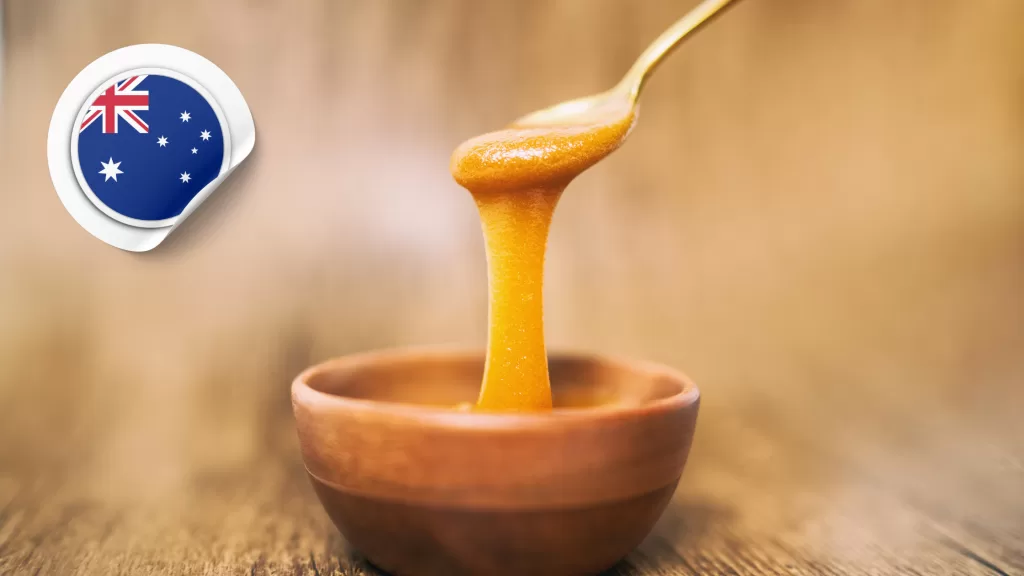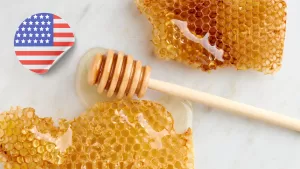Australia is home to some of the world’s finest honey, known for its unique flavors, exceptional quality, and health benefits. Thanks to its diverse flora and pristine natural environment, Australia produces honey that reflects the rich biodiversity of its landscapes. Whether it’s the famous Manuka honey from the Leptospermum trees or the vibrant varieties from wild eucalyptus, Australian honey stands out for its purity and depth of flavor.
In this 2000-word blog, we will explore the different types of honey produced in Australia, the honey-making process, and the numerous benefits associated with Australian honey. We’ll also look at why Australian honey is highly sought after worldwide and how it fits into a healthy lifestyle.
Table of Contents
ToggleThe Rich History of Honey in Australia
Honey has played an important role in Australia’s history, from Indigenous people using native honey in traditional remedies to European settlers bringing with them the practice of beekeeping. The country’s beekeeping industry began in the early 19th century, and today, Australia is a significant producer of honey, both for domestic consumption and export.
Australia’s isolation has kept its honeybee population largely free of some of the pests and diseases that have devastated bee colonies in other parts of the world, ensuring that Australian honey remains of high quality and purity.
Types of Australian Honey
Australian honey is as varied as the country’s landscape, with different floral sources producing distinct flavors, textures, and colors. Let’s take a look at some of the most popular types of honey produced in Australia.
1. Manuka Honey
Manuka honey, one of Australia’s most renowned varieties, is harvested from the nectar of the Leptospermum trees, particularly in Tasmania and Queensland. Known for its potent antibacterial properties, Manuka honey is a powerhouse of health benefits. It is often used for wound healing, boosting immunity, and promoting digestive health. What sets Australian Manuka honey apart is its higher MGO (methylglyoxal) content, which enhances its antimicrobial effectiveness.
2. Eucalyptus Honey
Eucalyptus honey is another major variety produced in Australia, with over 800 species of eucalyptus trees providing nectar for the bees. Eucalyptus honey is typically medium to dark amber in color and has a robust, slightly medicinal flavor. It is highly regarded for its antiseptic and anti-inflammatory properties, making it a favorite among consumers who seek natural remedies for colds and sore throats. Eucalyptus honey is also a popular table honey in Australia, used in cooking, baking, and as a spread.
3. Leatherwood Honey
Leatherwood honey comes from the nectar of leatherwood trees, which are native to Tasmania. This honey is prized for its aromatic and distinctive floral flavor, with hints of spices and a lingering aftertaste. Leatherwood honey is light amber in color and has a thick, creamy texture. It is unique to Tasmania and is one of Australia’s most sought-after gourmet honey varieties. The long flowering season of the leatherwood tree ensures a reliable annual harvest, making it a staple of the Tasmanian honey industry.
4. Red Gum Honey
Sourced from the nectar of the red gum trees that grow in southern and eastern Australia, red gum honey is known for its bold flavor and deep amber color. It has a rich, full-bodied taste with earthy undertones, making it a favorite for pairing with cheeses and using in marinades. Red gum honey is also rich in antioxidants and has anti-inflammatory properties.
5. Yellow Box Honey
Yellow box honey is one of Australia’s most popular varieties, known for its smooth, mild flavor and light golden color. It is harvested from the nectar of the yellow box eucalyptus tree, which grows in southeastern Australia. This honey is highly versatile, making it a great choice for sweetening tea, drizzling over yogurt, or using as a natural sweetener in recipes. Yellow box honey also has a low glycemic index, making it a healthier alternative to sugar.
6. Stringybark Honey
Stringybark honey is harvested from various species of stringybark trees found in Australia’s temperate regions. It is dark in color with a strong, slightly spicy flavor. This honey is rich in minerals and has antioxidant properties, making it popular among health-conscious consumers. Stringybark honey pairs well with strong-flavored foods like aged cheeses or roasted meats.
7. Macadamia Honey
Australia is known for its macadamia nuts, and macadamia honey is another product that highlights the country’s natural bounty. This honey is harvested from the nectar of macadamia tree flowers, which grow primarily in Queensland. Macadamia honey has a light, buttery flavor with a hint of nuttiness, making it an excellent choice for drizzling over desserts or adding to sauces.
Honey Production in Australia
Australia’s honey production process is characterized by its focus on sustainability and high quality. Beekeepers in Australia adhere to strict standards to ensure the health of their bees and the purity of the honey they produce.
Here’s an overview of the honey production process in Australia:
- Nectar Collection: Honeybees collect nectar from a variety of native Australian plants, depending on the region. The nectar is stored in the bee’s honey stomach, where enzymes begin the process of breaking down the sugars.
- Honeycomb Formation: Once back in the hive, the bees transfer the nectar into hexagonal honeycomb cells. The bees fan their wings to evaporate moisture from the nectar, turning it into honey.
- Sealing the Cells: When the honey reaches the right consistency, the bees cap the cells with beeswax to preserve it. This natural preservation process allows the honey to remain fresh for extended periods.
- Harvesting: Beekeepers harvest the honey by carefully removing the honeycomb frames from the hive. The honey is then extracted using a centrifuge, which spins the frames to release the honey.
- Filtration and Bottling: After extraction, the honey is usually filtered to remove any impurities like beeswax or pollen. Some beekeepers also offer raw honey, which is minimally processed to retain more of the natural enzymes and antioxidants. The honey is then bottled and ready for sale.
The Benefits of Australian Honey
Australian honey is revered not just for its taste but also for its wide range of health benefits. Here are some of the top reasons why Australian honey should be a staple in your pantry:
1. Antibacterial and Antimicrobial Properties
Many varieties of Australian honey, particularly Manuka honey, are known for their potent antibacterial and antimicrobial properties. These honeys can help in wound healing, reducing infection, and soothing skin irritations. Manuka honey, in particular, has been shown to be effective against antibiotic-resistant bacteria, making it a powerful natural remedy.
2. Rich in Antioxidants
Honey, especially darker varieties like stringybark and red gum, is packed with antioxidants, which help to protect the body against oxidative stress and free radicals. Antioxidants play a key role in reducing inflammation, supporting heart health, and lowering the risk of chronic diseases.
3. Supports Digestive Health
Honey has prebiotic properties that promote the growth of beneficial bacteria in the gut. This can improve digestion, alleviate constipation, and support overall digestive health. Raw honey, in particular, is beneficial for gut health due to its natural enzymes.
4. Natural Energy Source
Honey is an excellent source of natural carbohydrates, making it an ideal energy boost for athletes and those with active lifestyles. Its quick absorption into the bloodstream provides an immediate energy boost, without the crash associated with refined sugars.
5. Soothes Coughs and Sore Throats
Honey has long been used as a remedy for coughs and sore throats. Its thick consistency coats the throat, providing relief from irritation, while its antibacterial properties help to fight off infections. A spoonful of honey in warm water or tea is a tried-and-true remedy for colds.
Australian Honey in the Global Market
Australia exports a significant amount of its honey to international markets, with countries like China, Japan, and the United States being major importers. Australian honey is highly valued overseas due to its high quality and the country’s reputation for clean, natural products.
The Australian honey industry is also known for its transparency and traceability. Many honey producers in Australia offer single-origin honey, which allows consumers to know exactly where their honey comes from and ensures that they are getting a pure, unadulterated product.
Sustainability and the Future of Australian Honey
Australian beekeepers are deeply committed to sustainable practices, ensuring that their bees are well cared for and that the environment is protected. The beekeeping industry in Australia works closely with environmental organizations to preserve natural habitats and ensure that bees have access to healthy, pesticide-free environments.
The future of Australian honey looks bright, with increasing demand for natural, healthy, and sustainably produced foods. As consumers become more health-conscious and aware of the environmental impact of their food choices, Australian honey is poised to grow in popularity both at home and abroad.
Conclusion: Why Australian Honey is a Global Treasure
Australian honey is more than just a sweet treat—it’s a reflection of the country’s diverse ecosystems and commitment to sustainability. Whether you prefer the bold flavors of red gum honey, the delicate taste of yellow box honey, or the health-boosting properties of Manuka honey, there’s a type of Australian honey for every palate.
The next time you’re looking for a natural sweetener or a health-boosting addition to your diet, consider reaching for a jar of Australian honey. With its exceptional quality, rich flavor, and numerous health benefits, Australian honey truly stands out as one of the finest in the world.



